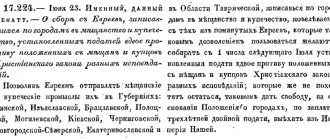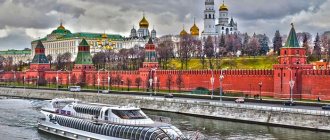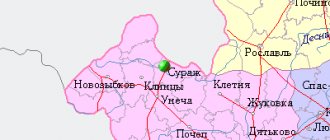Year founded: 1933
Malgobek celebrates the city day on
the 1st Sunday of September
.
In 2021,
this date is
September 5
.
In 2021, due to the pandemic, mass events in honor of the city day are canceled or may be postponed
Malgobek - City of Military Glory (Photo: malgobek.ru)
Malgobek
– Russian city in Ingushetia, administrative regional center. Located in the Ciscaucasia, on the southern slope of the Tersky Range in the Alkhanchurt Valley.
The city was founded in 1933
. In those years, new oil fields were actively being developed on the site of former Chechen villages. It was with the discovery by oil workers of well No. 13 on the Tersky Range that the history of Malgobek began, whose name is associated with the Magial-Bek tract, according to the title of the owner of these lands at that time.
The city was rightfully considered an achievement of the first five-year plans of the Soviet era. Experts from different fields came from all over the union: first of all, oil workers, engineers, and builders. Active development of Malgobek began. A railroad was built, various social institutions were built, houses, shops, and new oil derricks were built. Residents of the city are still proud of this powerful all-Union achievement: in the 30s, it was here that a drilling rig 5 kilometers deep was installed and launched. Already in 1941, Malgobek oil workers produced more than 1 million 300 thousand tons of oil, rightfully receiving the title of “The best drilling company in the Soviet Union.” But the Great Patriotic War began.
During the war years, many residents went to the front, and those who remained continued to extract oil, supplying the country with fuel for aircraft. In 1942 the city was besieged. For Germany, the capture of the Caucasus with its oil deposits was of the utmost strategic importance. Hitler’s plans included the capture of three most important points: Malgobek, Grozny, Baku. In this regard, the significance of the Malgobek defensive operation becomes clear. Soviet troops stopped the enemy, preventing him from approaching Grozny and Baku and thus transferring military forces to Stalingrad, although they paid a high price for this. About 120 thousand soldiers defending the city died in battle. And on January 3, 1943, the city of Malgobek was liberated from fascist troops.
The IS-3 tank is a monument to the soldiers of the 52nd Tank Brigade, the defenders of the city of Malgobek (Photo: wikipedia.org) For the courage, fortitude and heroism shown by the soldiers at the walls of the city, by Decree of the President of the Russian Federation
in 2007, Malgobek was awarded the honorary title “Military City glory
.
At the entrance to the city you can see a monument to the soldiers of the 52nd Separate Guards Tank Brigade. In total, about 30 monuments, steles and obelisks at mass graves remind of the heroic past of Malgobek; there are also 120 military graves on the territory of the city.
In Sergo Ordzhonikidzhe Park there is a memorial complex “Glory” and a museum of military and labor glory of Malgobek. There is a monument with the graves of 800 Soviet soldiers, a stele and a plaque of honor; in honor of the fallen soldiers, the Eternal Flame is always burning in the park. In the museum you can get acquainted with the labor history of the city associated with the development of oil wells. At one time, famous oil workers worked here - Heroes of Socialist Labor Marina Yakovlevna Pauk, Fyodor Lvovich Kolesnikov, Alexander Ivanovich Levshin, Akhmed Biberdovich Lologaev and others.
The city is home to more than 39 thousand inhabitants (2020), the bulk of the population are Ingush.
Day of the city
celebrated on the first Sunday of September.
History of conferring the honorary title “City of Military Glory”
The awarding of the honorary title “City of Military Glory” to Malgobek is an event of exceptional importance. This is a tribute to the memory of those people who died defending our country. This is a well-deserved tribute to the memory of the defenders of Malgobek, who covered themselves with unfading glory. Heroism and courage during the Malgobek defensive operation were shown not only by the soldiers, but also by the local militia, which defended their native land. It was near Malgobek that the Nazi offensive in the Caucasus ended, here they were stopped and defeated.
Etymology[ | ]
The toponym “Malgobek” is considered primary for the western part of the Tersky Range and is derived, according to one version, from the Kabardian language. Original Kabard.-Cherk. Melgebeg is a compound word consisting of mel
- “sheep”, the prefix of the causative
g'e-
and the root of the verb
beg
- “to swell” (meaning “to swell from poison”)[9].
According to another version, the name of the city comes from the name of the Magial-Bek
, on the site of which the city supposedly arose. From Ingush this toponym is translated as “supreme commander of the army” and is elevated to the title of the former owner of these lands[10].
The city during the Second World War
During the Great Patriotic War, the city of Malgobek was occupied from September 12, 1942 to January 3, 1943.
During the occupation, the city was very much destroyed; only a few dozen buildings survived.
In the western regions of the Chechen-Ingush Autonomous Soviet Socialist Republic captured by the Nazis, the structure of the occupation power had its own characteristics. They were due to the front-line situation, since the front line here was in close proximity to populated areas. Therefore, for example, in Malgobek, the German military command divided the city into 9 sections headed by elders. Several policemen were assigned to help them. The elders reported directly to the German military commandant of the city, Oberleutnant Lindemann. Consequently, the fascists did not create a city government in Malgobek, considering it unnecessary in the conditions of the front line.
Administrative and municipal status[edit]
As part of the administrative divisions, Malgobek serves as the administrative center of Malgobek District, even though it is not part of it. [ citation needed
] As an administrative division, it is included separately as
the city of republican significance of Malgobek
- an administrative unit with a status equal to that of districts.
[ citation needed
] As a municipal entity, the city of republican significance of Malgobek is part of
the Malgobek urban district
. [4]
Merits of the city in the military history of Russia
Malgobek was founded in 1933 in connection with the discovery of the Malgobek oil field, located in the Ciscaucasia, on the southern slope of the Tersky Range. In connection with landslide processes in the 50s of the 20th century, construction began on a new city for oil workers in the Alkhanchurt valley, located between the Tersky and Sunzhensky ranges.
In 1939, the oil workers' village of Malgobek was given city status.
In just 6-7 years, Malgobek became the largest fishery on a republican scale. High-speed wells were drilled here and oil production increased.
During the menacing years of the war, the oil workers of Malgobek worked with particular enthusiasm. For exemplary fulfillment of government assignments for the supply of fuel, by the Decree of the Presidium of the Supreme Soviet of the USSR on February 6, 1942, the team of field No. 2 was awarded the Order of Lenin. 250 leading production workers were also awarded.
Oil workers, together with residents of Malgobek, the front-line villages of Sagopshi, Inarki, and Psedakh, took an active part in the creation of defensive structures at the beginning of 1942.
In the summer of 1942, German troops, during fierce battles, approached the oil regions of Checheno-Ingushetia near the city of Malgobek. Fierce battles near Malgobek lasted for more than four months.
The outcome of the Malgobek defensive operation had a very serious impact on the results of military operations on the entire Transcaucasian front.
It is the oil factor that gives the main direction of the enemy attack in 1942, Malgobek - Grozny - Baku, such exceptionally important strategic importance in the entire battle for the Caucasus.
On January 3, 1943, Malgobek was liberated from Nazi troops. These days went down in the history of the city forever.
Climate[edit]
Malgobek has a humid continental climate (Köppen climate classification: Dfa
).
| Climate data for Malgobek | |||||||||||||
| Month | Jan | Feb | Mar | Apr | May | Jun | Jul | Aug | Sep | October | But I | December | Year |
| Average high °C (°F) | 0,5 (32,9) | 2,0 (35,6) | 7,4 (45,3) | 15,9 (60,6) | 22,0 (71,6) | 25,8 (78,4) | 28,1 (82,6) | 27,7 (81,9) | 22,4 (72,3) | 15,6 (60,1) | 8,1 (46,6) | 3,0 (37,4) | 14,9 (58,8) |
| Daily average °C (°F) | −3,3 (26,1) | -2,2 (28,0) | 2,8 (37,0) | 9,8 (49,6) | 15,8 (60,4) | 19,6 (67,3) | 22,1 (71,8) | 21,6 (70,9) | 16,4 (61,5) | 10,2 (50,4) | 4,0 (39,2) | -0,7 (30,7) | 9,7 (49,4) |
| Average low °C (°F) | −7,1 (19,2) | -6,4 (20,5) | -1,7 (28,9) | 3,8 (38,8) | 9,7 (49,5) | 13,5 (56,3) | 16,2 (61,2) | 15,5 (59,9) | 10,5 (50,9) | 4,9 (40,8) | 0,0 (32,0) | −4,3 (24,3) | 4,6 (40,2) |
| Average precipitation, mm (inches) | 26 (1.0) | 27 (1,1) | 35 (1,4) | 55 (2,2) | 85 (3,3) | 106 (4,2) | 83 (3,3) | 69 (2,7) | 50 (2,0) | 40 (1,6) | 36 (1,4) | 31 (1,2) | 643 (25,4) |
| Source: [10] | |||||||||||||
The most significant military events associated with the city
The Mozdok-Malgobek operation was a defensive operation of the Northern Group of Forces of the Transcaucasian Front in the Great Patriotic War, carried out during the Battle of the Caucasus from September 1 to 28, 1942 in order to repel the advance of German troops and disrupt their attempt to break into the oil regions of the Caucasus.
After reaching the Prokhladny, Mozdok, Ishcherskaya line, the fascist German command intended to break through the defenses of the Soviet troops on the river. Terek, destroy the main forces of the 9th Army and develop an offensive along the Alkhan-Churt valley towards Grozny, Makhachkala. To achieve this goal, the 1st Tank Army of Army Group “A” was brought in, consisting of three tank and three infantry divisions, of which one tank and one infantry division operated in the Nalchik direction, and two tank and two infantry divisions concentrated in the Malgobek direction, where the main blow was delivered. In the first echelon of the northern group of forces (commanded by Lieutenant General I.I. Maslennikov) there were the 37th Army in the Nalchik direction and the 9th Army in the Malgobek direction. They were given the task of preventing an enemy breakthrough in their axes through stubborn defense. The actions of ground troops were supported by the 4th Air Army. By September 1, the general balance of forces, except for tanks and aircraft, in the northern group zone was in favor of the Soviet troops. However, the group's command distributed forces, especially artillery, evenly along the entire front. Therefore, in the direction chosen for the main attack, the enemy had superiority in artillery by more than 6 times and in tanks by more than 4 times. Of the 2,356 guns and mortars available in the northern group, only 237 guns and mortars were operational in the Malgobek direction in the first period of the defensive operation. On the night of September 1, the enemy launched diversionary attacks east of Mozdok. The next day, in the morning, the troops of his strike group, supported by aviation and strong artillery fire, began crossing the Terek south of Mozdok. Units and formations of the 9th Army fought fierce battles, inflicting heavy losses on the enemy; many settlements changed hands several times. Having concentrated four divisions and 200 tanks against one rifle division and two rifle brigades of the 9th Army, the enemy crossed the Terek and penetrated the defenses of the Soviet troops to a depth of 12 km. Units and formations from the reserve and from unattacked areas were advanced to the breakthrough area. On September 3, the enemy was driven back by approaching formations of the 11th Guards Rifle Corps 9 km to the north. The 4th Air Army provided active assistance to the ground forces of the northern group of forces. On September 6 alone, 460 sorties were carried out in the Premostny and Kizlyarskoe areas against concentrations of enemy infantry and tanks. However, the enemy did not abandon his plan to break through to the Alkhan-Churt valley. To strengthen the Mozdok group, he removed the SS Viking motorized division from the Tuapse direction and transferred it to the Mozdok area. At the cost of heavy losses, the enemy managed to push back units of the 9th Army and by September 29 captured Terek, Planovskoye and Illarionovna. But the enemy was unable to achieve operational success in this sector and was forced to go on the defensive. The persistent and steadily increasing resistance of the Soviet troops, the huge losses suffered by the fascist army in intense battles in the area of Mozdok, Malgobek and Elkhotovo, forced the Nazi command to abandon the offensive in the Grozny direction. An important role was played by the wide maneuver of reserves, clear interaction of all branches of the military and the mass heroism of Soviet soldiers, due to continuous party-political work in units and formations. During the Mozdok-Malgobek operation, the fascist German command was unable to reinforce Army Group A with reserves, since they were needed at Stalingrad, where enemy troops were still trying to capture the city. At the same time, the enemy did not have the opportunity to weaken Army Group A and, through it, strengthen Army Group B, which was advancing on Stalingrad. Thus, the course and outcome of the Mozdok-Malgobek operation had a significant impact on the disruption of the enemy’s plans to capture the Grozny and Baku oil regions and on the course of the battle for the Caucasus.
Local government[ | ]
The structure of local government bodies of the city of Malgobek is [46]:
- the representative body of the municipality is the City Council;
- the head of the municipality - the head of the city of Malgobek;
- the executive and administrative body of the municipality is the administration of the city of Malgobek (local administration);
- control and accounting body of the municipality.
Chairmen of the Assembly of Deputies
- from 2009 to 2013 - Gantemirov Eraki Ayupovich
- from 2013 to 2021 - Mamilov Sharpudin Savarbekovich
- from 2021 - Evloev Usman Sulimanovich
Heads of Administration
- Tsurov Mustafa Tuganovich (2001-2002)
- Mamilov Tugan Alaudinovich (2002)
- Alikhanov Mukhmatkhan Akhmetovich (2002-2008)
- Korigov Mukhmad Pashaevich (2008—2012)
- Dodov Akhmed Mukharbekovich (2012-2014)
- Evloev Mukhazhir Nuradinovich (2014—2016)
- Mamilov Sharpudin Savarbekovich (2016—2018)
- Egiev Suleiman Magometovich (2018-2019)
- Galaev Mussa Isaevich (since 2019)
Merits of the city's rear
The people were preparing to defend their land, primarily on the labor front.
Collectives of industrial enterprises of the republic went on labor shifts. The drillers of the Malgobekneft trust achieved great production successes. In 1941, they were awarded the honorary title “Best Drilling Company of the Soviet Union” and presented with the Challenge Red Banner of the All-Union Central Council of Trade Unions and the People's Commissariat of Oil of the USSR for championship in the All-Union Socialist Competition.
In the fall of 1941, the State Defense Committee decided to build defensive structures in the North Caucasus region, starting from the Caspian Sea, along the right bank of the Terek River and further to Mineralnye Vody. On the territory of Ingushetia, a defense line was built along the right bank of the Terek River - from the border of the Mozdok region to the border of the Dagestan Autonomous Soviet Socialist Republic, 100 kilometers long.
In 1941-1942, the Chechen Autonomous Soviet Socialist Republic sent collective parcels worth 807,750 rubles, 2,417 individual parcels to the front, and collected 759 thousand rubles for gifts. During 10 months of 1943, the working people of the republic sent trains with gifts for soldiers to the front 5 times.
Over 400 wagons loaded with meat, potatoes, butter, vegetables, fruits, honey, wine and other products were sent to the front.
Links[edit]
Notes[edit]
- ^ abcd Federal State Statistics Service (2011). “All-Russian Population Census 2010. Volume 1" [All-Russian Population Census 2010, vol. 1]. All-Russian Population Census 2010 [All-Russian Population Census 2010]
. Federal State Statistics Service. - ^ ab "General Information". The Republic of Ingushetia . Retrieved September 3, 2021.
- https://www.gks.ru/free_doc/doc_2018/bul_dr/mun_obr2018.rar ; archived date: July 26, 2021; received: July 25, 2021; Archive URL: https://web.archive.org/web/20180726010024/https://www.gks.ru/free_doc/doc_2018/bul_dr/mun_obr2018.rar.
- ^ a b Law No. 5-RZ
- "On the Calculation of Time". Official Internet portal of legal information
. June 3, 2011. Retrieved January 19, 2021. - Post office. Information and computing center of OASU RPO. ( Post office
).
Search for postal service objects ( postal Search for objects
) (in Russian) - ↑
Federal State Statistics Service of Russia (May 21, 2004).
“The population of Russia, the constituent entities of the Russian Federation as part of federal districts, urban settlements, settlements, settlements is 3 thousand or more people” [Population of Russia, its federal districts, federal districts, districts Urban settlements, rural settlements - administrative centers and rural settlements with a population of over 3,000] (XLS). All-Russian Population Census 2002
. - “All-Union Population Census of 1989. The current population of the union and autonomous republics, autonomous regions and districts, territories, negative phenomena, urban settlements and villages, the City of Military Glory.” (Decree of the President of the Russian Federation of October 8, 2007 No. 1344 “ On conferring the honorary title of the Russian Federation “City of Military Glory” on the city of Malgobek
.) - "Climate: Malgobek". Climate-Data.org. Retrieved March 22, 2018.










